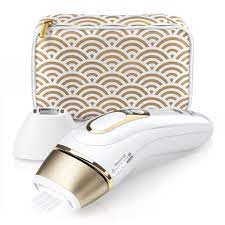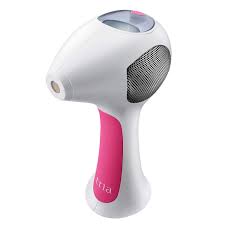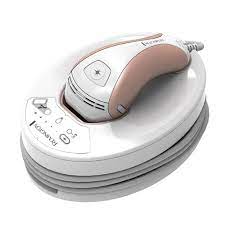What is laser hair removal and how does it work?
Laser hair removal is an advanced, non-invasive method for permanently reducing unwanted hair growth. The process is based on the use of laser light, which is directed at the hair follicles and absorbs the melanin in the hair. This absorption generates heat, which destroys the hair follicle and prevents new hair from growing back.
The different types of lasers for hair removal
There are different types of lasers that are used in hair removal. These include the alexandrite laser, the diode laser, the Nd:YAG laser and the ruby laser. Each laser has its own advantages and is best suited to different skin and hair types.
Alexandrite laser
The alexandrite laser is a powerful laser that is particularly suitable for light skin and dark hair. Candela GentleLASE is an example of such a laser that delivers effective results while being safe for the skin.
Diode laser
The diode laser is one of the most commonly used technologies for laser hair removal. It is particularly suitable for darker skin types and provides long-lasting results when used correctly. Lumenis LightSheer is an example of a diode laser that is suitable for both light and dark skin types.
Nd:YAG laser
The Nd:YAG laser is another option for permanent hair removal and is particularly suitable for dark skin types. Cutera Excel HR is an example of a Nd:YAG laser that is suitable for both light and dark skin types.
Ruby laser
The ruby laser is the oldest laser for hair removal and is best suited to light skin and dark hair. Due to its limited suitability for different skin types, it is used less frequently today.

Preparation for laser hair removal
Before you undergo laser hair removal, you should take some important preparatory measures:
- Avoid sun exposure and visits to the solarium for at least
at least 4 weeks before the treatment. Sun tanning can increase the risk of side effects and reduce the effectiveness of the treatment.
- Shave the area to be treated 24 hours before the session. The hair should be short but still visible so that the laser can effectively reach the melanin in the hair follicle.
- Avoid waxing or plucking for at least 4 weeks prior to treatment as these methods can remove the hair at the root and affect the success of laser hair removal.
- Avoid cosmetic treatments, such as chemical peels or microdermabrasion, for at least two weeks before the laser treatment to prevent skin irritation.
Aftercare and common side effects of laser hair removal
After laser hair removal, you should follow some aftercare measures to achieve the best results and minimize side effects:
- Avoid direct sunlight for at least two weeks after treatment and use sunscreen with a high sun protection factor to protect the skin.
- Cool the treated area after the session to reduce swelling and redness. Ice packs or cooling gels are suitable for this.
- Avoid aggressive skin cleansing products and perfumed lotions for a few days after the treatment to prevent skin irritation.
Common side effects of laser hair removal are swelling, redness and slight pain in the treated area. These side effects usually subside within a few hours to days. In rare cases, blisters, infections or pigment changes may occur. In such cases, consult your dermatologist.
The effectiveness of laser hair removal and the number of sessions required
The effectiveness of laser hair removal varies depending on the skin and hair type, the laser technology used and the experience of the treating specialist. Several sessions are usually required to achieve an optimal result. Most people need 6 to 8 treatments at intervals of 4 to 6 weeks to achieve a permanent hair reduction of 80 to 90%.
Cost of laser hair removal
The cost of laser hair removal depends on the size of the area to be treated, the number of sessions required and the region you are having treated. In Germany, prices for a session range between 50 and 300 euros, depending on the treatment area. The costs can be higher for larger areas, such as the back. It is important to choose a reputable clinic or dermatologist who has experience and good references to ensure you receive quality treatment.
Laser hair removal devices for at home
There are now a variety of laser hair removal devices on the market for use at home. Here are some examples:
- Philips Lumea Prestige: This device uses IPL technology and can be used for both the body and the face. It has five intensity levels and can permanently remove up to 92% of hair.

- Braun Silk-expert Pro 5: This device also uses IPL technology and has ten intensity levels. It can remove up to 22% more hair than the previous version.

- Tria Beauty Hair Removal Laser 4X: This device uses a real laser and can permanently remove up to 70% of hair. However, it is not suitable for all skin types and requires careful handling.

- Remington i-Light Pro: This device also uses IPL technology and has five intensity levels. It can remove up to 94% of hair and is suitable for use on the body.

- Silk’n Infinity: This device uses eHPL technology and can be used for both the body and the face. It has five intensity levels and can remove up to 92% of hair.

However, it is important to note that not all appliances are suitable for all skin types and hair colors. It is advisable to consult an expert and read the operating instructions carefully before purchasing a laser hair removal device for use at home.
Conclusion
Laser hair removal is an effective method for permanently reducing unwanted hair growth. It is important to choose the right laser technology for your skin and hair type and to be treated by an experienced dermatologist. Preparation and aftercare are crucial to achieve the best results and minimize side effects. Although the cost of laser hair removal can be relatively high, in the long term it offers a cost-effective and time-saving solution compared to traditional hair removal methods.
Everything you need to know about the optimal use of retinol creams








